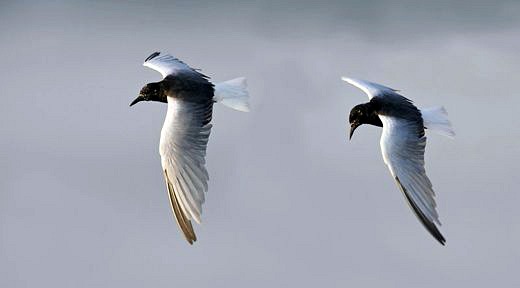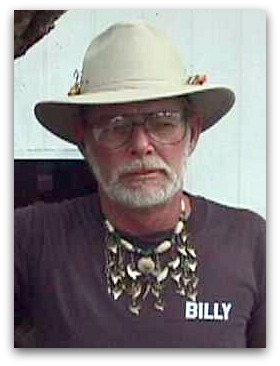“Wildlife, offshore wind turbines a bad mix” (Texas)
Oct 26, 2011
.
.
—Billy Sandifer, Corpus Christi Caller-Times (10/25/11)
I have fished Padre Island for 53 years and have been the only licensed fishing guide and naturalist providing tours on the National Seashore for the past 22 years. On average I am down island about 128 days per year. I am the founder of the Big Shell Beach Cleanup and have been its primary organizer for the past 17 years. During that time, 2.3 million pounds of debris has been removed by this volunteer effort. In 2010, I was chosen as one of the six Heroes of Conservation by Field & Stream Magazine. I received the first ever Lifetime Conservation Award from the Coastal Conservation Association and this year was the popular choice winner of the Making a Difference Award competition sponsored by Sports Fishing Magazine.
Hopefully this qualifies me to comment on the natural resources of the Coastal Bend.
In early September I encountered what I roughly estimated were 750,000 black terns on Padre Island National Seashore. This represents only a fraction of the native and migratory birds on the island. Padre is recognized as a Globally Important Bird Area by the American Bird Conservancy and a site of hemispheric importance by the Western Hemisphere Shorebird Reserve Network.
Following that sighting of black terns I spent the next seven days and a night down island. The number of birds I counted fluctuated greatly. One day I’d see 300 to 400 terns and on another day I estimated 350,000 birds. This was not a migration in or out of the area. On the contrary, the birds were coming and going to feed on incoming schools of dusky anchovies that wander near shore and offshore this time of year. When these huge shoals of anchovies are five or 10 miles offshore the birds follow, but they don’t return to shore when they’re not feeding. They simply sleep on the water to remain near their prey. All pelagic and shore birds that eat fish are attracted to schools of anchovies, menhaden and other such foraging species.
If hundreds of wind turbines are erected in the Gulf of Mexico within proximity of Padre Island, then baitfish will be drawn instinctively to the protective structure in the same way they are drawn to oil and gas platforms. And in turn the birds will follow.
But unlike oil and gas platforms, when the birds are drawn to feed or rest on these massive structures, they will be in peril.
Installing a bank of wind turbines reaching 700 feet above the water’s surface spread over 60,000 acres five to 10 miles off the Padre Island beach would be like chumming the birds into the killing blades.
I have a 25-foot boat that I regularly take offshore during migration season. I see wood warblers, hummingbirds, ducks, peregrine falcons, Hudson godwits and egrets migrating within 700 feet above the surface of the sea. There is no way to accurately record the number of birds that will be killed by these turbines. The Padre Island National Seashore’s list of other concerns includes the possibility of turbines interfering with the homing instincts of sea turtles, thereby jeopardizing decades of effort by Donna Shaver.
Why in the name of God would anyone who cares anything about the environment possibly pick this location for such a gigantic wind farm?
I live in a rather harsh and very real world. And I’ve learned some things. When you pull a trigger you can’t stop the bullet. It’s gone. Like an extinct species, there is no amount of “what-ifs” or “if we had just done something” that will bring them back.
But there is still time in this case. If we stand up for what we know is right and organize we can stop these Cuisinarts of the sky from coming.
As a native son of Texas and a lifelong resident of the Coastal Bend, I consider the beauty of our sunrises over the Gulf and abundance of wildlife not only a blessing but a birthright to behold. These are the things that residents and visitors alike treasure. And these are the things we have been entrusted to keep for our children and grandchildren.
Wind farms don’t make aesthetic sense, environmental sense or economic sense for the Coastal Bend. The fact that they have to be subsidized by our tax dollars should be an indication that they might not be in our best interest.And most of all I’m terribly offended by people willing to destroy my view of the Gulf horizon while unnecessarily killing thousands of birds for their own profit. Let’s keep our Texas wild, say no to these profiteers and stop the madness.



Comment by Frank Haggerty on 10/27/2011 at 9:08 am
In 2005 to 2006 The The Massachusetts Technology Collaborative ,the state’s economic development agency for renewable energy did a study for Mattapoisett,Massachusetts . The agency is pro wind turbine and prepares reports for wind turbine installations
In its report for Mattapoisett it said they were unsure if there where any Important Bird Areas ,IBAs,around Mattapoisett. Ram Island in Mattapoisett only a few thousand feet off the coast is the chief nesting area of all the Roseate Terns in North America .
The report had a mistake on almost every page and up to three what they called mistakes on other pages most of which are called fatal flaws .
When confronted about all the ” mistakes ” the multimillion dollar MTC agency replied that they had only paid college students $5000.00 to prepare the report and it wasn’t their fault .
Don’t beleive what you read ! Look between the lines .Here is the report prepared for Mattapoisett:
http://masstech.org/Project%20Deliverables/Comm_Wind/Mattapoisett/Tri-Town_ORR_Preliminary_Site_Analysis.pdf
Comment by Eric Bibler on 10/27/2011 at 9:25 am
Dear Mr. Sandifer,
Thank you for your lifelong dedication to the preservation of our natural resources. And thank you for speaking out on this issue and defending such a precious national resource.
Please let us know how we can make a difference. To whom should we write? How do we make our opposition to this plan known — and effective?
In the meantime, I strongly urge you to contact the National Parks Conservation Association, which now has some experience with this issue.
Last year, when a local town promoted a plan to install up to three 410 foot land-based wind turbines in the heart of the Cape Cod National Seashore — with the enthusiastic support of the superintendent of the national park — the NPCA responded to our plea for their involvement and, after much study, issued a letter opposing the project — and the superintendent — on behalf of its 350,000 members.
The Cape Cod National Seashore, like Padre Island, has been designated as an Important Bird Area. It is a very fragile habitat but, in truth, it is not nearly as vital to migrating bird populations as Padre Island, which is a global nexus for the bi-annual migration of hundreds of species of birds between the northern and southern hemispheres.
I believe that you need help from large organizations with significant resources and political clout that are dedicated to environmental conservation in order to fight this battle.
I believe that you need to confront the Sierra Club, the Audubon Society, the NRDC and others that have been supportive of wind energy in the past and demand that they oppose this plan. You should demand that they defend their support of the notion of destroying vast tracts of sensitive habitat — such as the south Texas coast — in the name of saving the planet
from global warming.
But, in the meantime, you need allies.
Field & Stream, Sports Fishing, Coastal Conservation, American Bird Conservancy, Western Hemisphere Shorebird Reserve Network, the NPCA — this is a good start. If you can round up a list of contacts and publish them, people can write to them.
Focus your efforts on galvanizing these organizations into action. Tell them that you are out on Padre Island picking up thousands, if not millions, of pounds of garbage every year, but there is a limit to how much one man can do. How about a little help here?
You should also encourage all of them to lodge protests directly with the National Park Service. And you should ask them all to get in touch with their counterparts at sister organizations that have irresponsibly supported such projects without appreciating that the adverse impacts are profound and that the benefits are negligible, or non-existent.
You might also contact the unit in the NPS that assesses the impact of noise in the national parks — the Natural Sounds Program based in Fort Collins, CO (http://www.nature.nps.gov/naturalsounds/). Superintendents of our national parks are obligated to protect the “soundscape” within our national parks (see Director’s Order #47 – http://www.nps.gov/policy/DOrders/DOrder47.html) — and this is the group at NPS that assesses the damage.
You should demand that the NPS engage this group to perform an assessment of the potential adverse impacts from the project — both atmospheric, to migrating birds, and maritime, to ocean wildlife. At the very least, you should demand that they review any noise studies put forward by the developer.
Thanks again for your efforts. Please let us know what concrete steps we can take to support you and I am sure that the public will respond.
Eric Bibler
President
Save Our Seashore
Comment by Mike on 10/27/2011 at 4:37 pm
In some cases, any court finding that permits or zoning approval the “shocks the conscience”, or is “arbitrary & capricious”, is legal grounds for overturning the local approval of a project.
I would suggest that the examples of ignorance, false or sloppy studies for project support, cited by Mr. Bibler, should meet this extreme test.